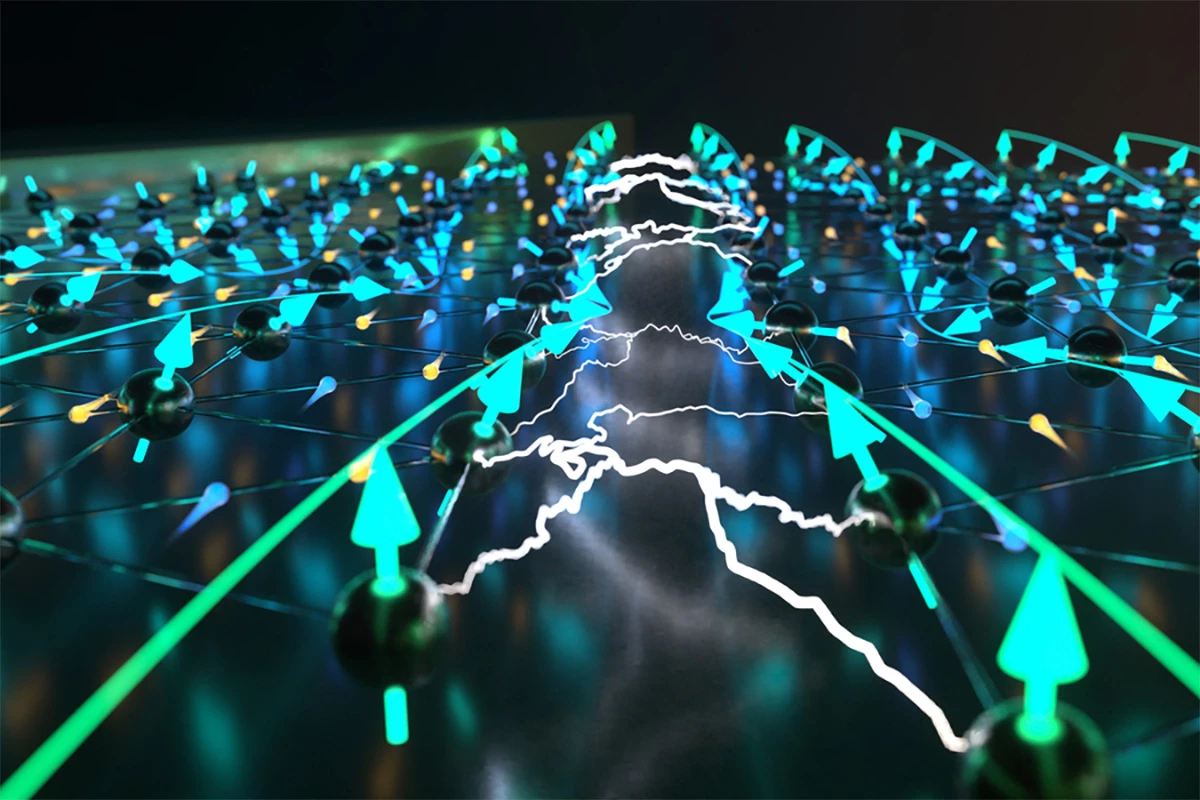Researchers at Massachusetts Institute of Technology have demonstrated an entirely new form of magnetism in a synthesized crystalline material. They're calling it p-wave magnetism.
This discovery is significant because the ability to control electron spins in this manner offers a promising path toward developing faster, more energy-efficient "spintronic" memory devices as an alternative to current electronics.
Here's a brief rundown of this breakthrough. In a regular ferromagnet, the electrons in its atoms all have the same spin orientation. In antiferromagnets (like some metal alloys and metal oxides), electrons have alternating spins, which results in them not exhibiting macroscopic magnetization.
In a wafer-thin crystalline sample of nickel iodide, the team observed that the spins of nickel atoms were arranged in a spiral pattern throughout the material’s lattice. This unique pattern could spiral in two different orientations, and can be switched using a small electric field from a beam of circularly polarized light.

That can come in handy for developing efficient new devices, like memory chips for computers. "With such a current of spin, you can do interesting things at the device level, for instance, you could flip magnetic domains that can be used for control of a magnetic bit," explained Researcher Riccardo Comin, an author of the paper that appeared in the journal Nature last month. "These spintronic effects are more efficient than conventional electronics because you’re just moving spins around, rather than moving charges. That means you’re not subject to any dissipation effects that generate heat, which is essentially the reason computers heat up."
To recap, spintronics is a relatively new field that looks to use the orientation of electron spins to store information and perform logic operations – similar to how we use the flow of electric currents to represent ones and zeroes in today's electronics. Here's a simple explanation of the concept in two minutes:
Researcher Qian Song believes that since this property only requires a small electric field to be controlled, “P-wave magnets could save five orders of magnitude of energy. Which is huge.”
There's still a long way to go before this new form of magnetism can be feasibly harnessed in future devices. The biggest challenge is that the property was observed at ultracold temperatures of about 60 kelvins (-351 °F/-213 °C). We'll need to find materials that exhibit p-wave magnetism at room temperature before we can leverage it in next-generation memory chips. But at least now we know what to look for.
Source: MIT News




